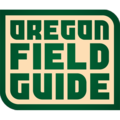Days
<1
Motors Allowed?
No
Difficulty
Easy / Class A
Please respect the outdoors by practicing Leave No Trace. Learn more about how to apply the principles of Leave No Trace on your next outdoor adventure here.
Disappearing Lake is an occasional feature, and that is what makes the place so special. The lake forms in the spring, with a depth of 6 to 8 feet in places. As the weather warms it quickly disappears, leaving an area known as South Prairie in its place. Forest Service botanists speculate that the lake is formed when a lava tube freezes up, damming the creek that feeds the prairie. When the ice melts, the lake water quickly recedes.
The area's bayou-like feel makes Disappearing Lake a unique destination. Paddlers can get up close to huge cottonwood trees surrounded by water, and driftwood floats in the lake and along its shores. Lodgepole pine and aspen ring the lake along with the Douglas fir that is more commonly found throughout the area. There are many opportunities to explore the features that become lake channels, our you can wander through the lava fields that surround the lake and become filled with crystal-clear water. In the summer, South Prairie stays lush much longer than most other meadows in the area. According to the Forest Service, South Prairie is host to the largest population of a rare iris species.
The lake is easy to reach once you know where to go, and the easiest put-in for the lake is at the junction of Forest Service roads 66 and 6610, which is marked by the Forest Service sign that for South Prairie. The road to Disappearing Lake is beautiful in its own right, as it follows an ancient Mount Adams lava flow and occasionally offers glimpses of the volcano through the trees.







Oregon Field Guide is OPB's long-running local weekly TV series. The program covers natural resources, ecological issues, outdoor recreation and travel destinations across the Northwest region. This award-winning show is one of the most-watched local productions in the public broadcasting system.
Oregon Field Guide also extends the work it does in the field for the television series across radio and the Web, providing a greater degree of coverage.
Oregon Field Guide airs Thursday evenings at 8:30 p.m. and repeats Sundays at 1:30 a.m. and 6:30 p.m. In the Mountain Time zone of Eastern Oregon, the program airs at 9:30 p.m. Thursdays, and at 7:30 p.m. Sundays.

Comments
If someone goes in later this year and the water is higher, post that info - it would then seem I was wrong and the lake was still filling. But by all all signs of willow growth, grasses and flowers, it sure seemed like it had already receded. Photo shows what is usually lake, by the parking spot on 66, that now is a meadow. The water has been 4-8 ft deep at that grassy spot other trips.
Sign In and share them.